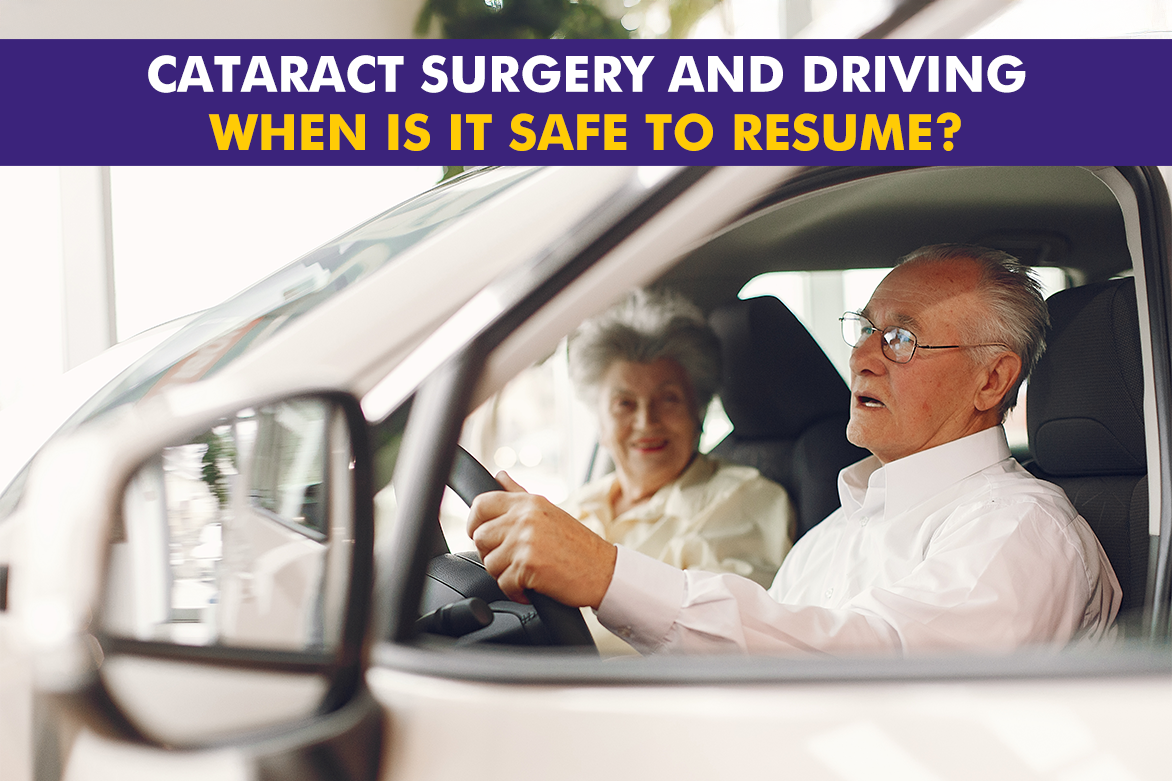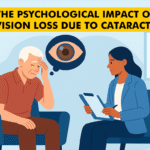Table of Contents
- Understanding What to Expect After Cataract Surgery
- Post-Surgery Recovery: Key Milestones
- Common Restrictions After Cataract Surgery
- Why Driving After Cataract Surgery Requires Caution
- Signs Your Vision is Ready for Driving
- Consulting Your Eye Surgeon: Essential Questions to Ask
- Safety Tips for Your First Drive Post Cataract Surgery
- Impact of Glasses Post-Surgery
- Conclusion
- FAQs
Getting your independence back is one of the greatest joys after cataract surgery. But as tempting as it is to jump straight behind the wheel, safely returning to driving requires careful preparation and attention to your vision and healing. This blog explores not just the when, but the how and why of driving after cataract surgery, highlighting legal requirements, real-life factors, and expert-approved tips so your transition back to the road is smooth, stress-free, and perfectly safe.
Understanding What to Expect After Cataract Surgery
Cataract eye surgery is a quick—often less than 30 minutes—outpatient procedure. The cloudy eye lens is replaced with a clear artificial intraocular lens (IOL), instantly restoring the pathway for light to reach the retina.
- Immediate results: Many patients report brighter, crisper, more colorful vision within hours.
- Vision may fluctuate in the first few days, and mild discomfort, scratchiness, or teary eyes are normal.
Types of IOLs
- Monofocal lenses (set for a single distance: near or far)
- Multifocal or EDOF (Extended Depth of Focus) lenses (provide focus at multiple distances)
- Toric lenses (for astigmatism correction)
Picking the right IOL affects not only your visual clarity, but also your risk of glare while driving—especially at night.
Post-Surgery Recovery: Key Milestones
Understanding recovery helps you set realistic expectations for returning to the wheel. Here is the milestone:
- First 24-48 hours: Vision improves, but rest is crucial; avoid all driving.
- Days 2-7: Most people see major clarity gains and reduced brightness sensitivity.
- Week 1-2: Doctor may clear you for light daily activities—BUT only after confirming vision is stable enough.
- Week 4-6: Eye heals fully for most; visual sharpness, color perception, and depth stabilize.
Healing speed varies with age, health, IOL type, and how closely you follow pre- and post-op care instructions.
Common Restrictions After Cataract Surgery
The IOL placed inside and incisions require a gentle healing environment to ensure excellent results. To keep your eye safe while it recovers, strict but short-lived precautions after cataract surgery are advised:
- No driving, heavy lifting, or bending over for at least the first few days (ask your surgeon for the green light).
- No eye rubbing, even if itchy—risking infection or IOL displacement.
- Avoid water exposure: No swimming, face-down showers, or soap near the eye for a week.
- Wear eye shield/sunglasses: Protects from dust, wind, and unexpected impacts.
Why Driving After Cataract Surgery Requires Caution
Driving a vehicle demands more than just seeing straight ahead.
Real Risks in Early Recovery
- Blurry or fluctuating vision can impair reaction time.
- Light sensitivity/glare, especially at dusk or from headlights, is common until your eye adapts.
- Depth perception and peripheral vision may adjust slowly as your brain “re-learns” visual cues.
Legal Requirements: In most regions around the world, you must meet a minimum standard for best-corrected vision (often 20/40 or better in at least one eye). Your surgeon will test this before giving you the “all clear.”
Signs Your Vision is Ready for Driving
Before you even consider picking up your keys, make sure you:
- See clearly at both close and far distances—no significant blurring or color distortion.
- Comfortably read street signs and identify obstacles in daylight, and (if applicable) at dusk.
- Notice a significant reduction in glare, halos, and starbursts around lights.
- Feel confident and coordinated—not distracted by dryness, floaters, or double vision.
At-Home Self-Test:
Before driving on public roads, practice by reading small print on TV subtitles, identifying license plates at a distance, and looking left-right for movement cues in a safe environment.
Consulting Your Eye Surgeon: Essential Questions to Ask
Be proactive in your recovery conversations. Ask:
- Is my vision safe for driving based on current tests?”
- Are there any activities/maneuvers I should avoid at first (e.g., night driving, highways)?”
- Can you check for side effects like double vision or distorted field of view before I resume?”
- Do I need a new glasses prescription before resuming driving?”
Safety Tips for Your First Drive Post Cataract Surgery
-
- Start small: Choose quiet, familiar roads and daytime hours with good visibility.
- Bring a friend: Let someone ride with you in case you feel uncertain.
- Keep windows and windshield spotless to minimize extra glare or light scatter.
- Always wear prescribed sunglasses or photochromic lenses to reduce brightness.
- Avoid poor weather: Rain or fog can worsen early-stage post-op vision.
- Avoid Night Driving: Resume driving in the daytime first. Night driving should start once you are comfortable with daytime driving and nighttime vision (usually a week or two weeks after the daytime vision clears).
Wait another week before attempting night driving or complex journeys as adaptation to new lenses often takes a little longer when facing oncoming headlight glare.
When to Delay Driving Further
Every patient’s healing journey is unique. Delay driving if you experience:
- Persistent blurriness, especially with moving objects
- Double vision, severe floaters, or obvious distortion
- Ongoing discomfort, redness, swelling, or pain in the treated eye
- Any amount of new light sensitivity after the first week
Tips for Smoother Adjustment
- Take frequent visual breaks to reduce fatigue.
- Practice focusing on different distances throughout the day.
- Use lubricating drops to combat dryness, which may blur vision and increase light scatter.
- Engage in stimulating, safe visual activities—like reading, puzzles, or gentle outdoor walks.
Adjusting to Vision After Cataract Surgery
Your brain will need to adjust to new images and sharper contrast. For those receiving multifocal or toric IOLs, some initial halos or flickering are normal and subside as adaptation occurs.
Impact of Glasses Post-Surgery
Some individuals may still need glasses for reading or specific tasks, depending on the lens chosen or if both eyes haven’t yet been operated. Your doctor might recommend temporary glasses for driving until both surgeries (if needed) are complete. Re-test your vision one month after surgery for the most accurate prescription.
Conclusion
Driving is freedom, and after cataract surgery, it’s absolutely within reach—but only after careful self-assessment and medical clearance. Prioritize each step in your healing, keep communication open with your eye specialist, and remember that safety comes before convenience. With patience and preparation, your post-surgery life can be safer, more independent, and full of new visual discoveries—on the road and beyond.





